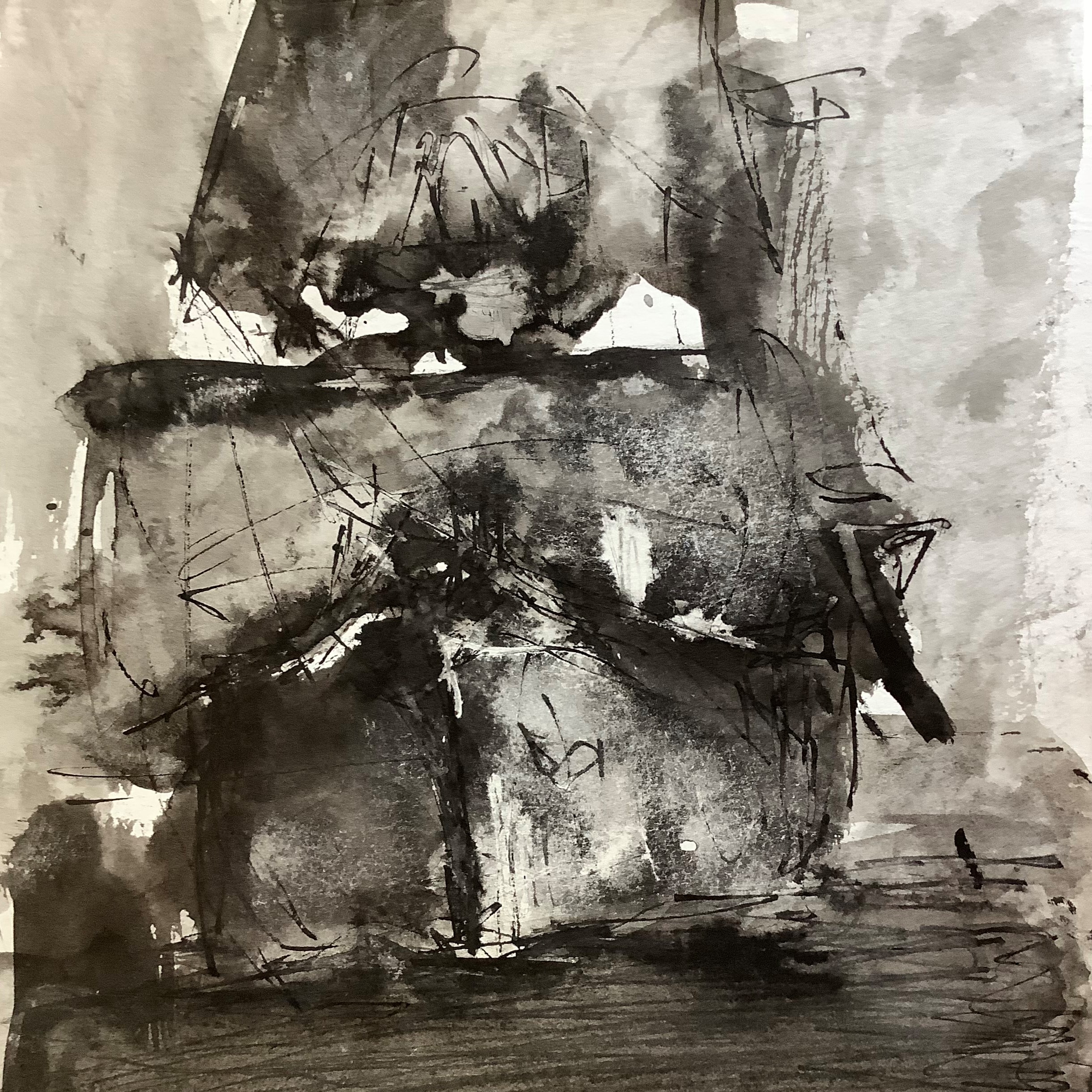Boatbuilding and urban genesis
Knowledge creation and transfer in traditional boatbuilding craft
DOI:
https://doi.org/10.7577/formakademisk.5490Emneord (Nøkkelord):
Boatbuilding, knowledge production, creativity, Craft tradition, Intangible heritageSammendrag
Traditional boatbuilding today is a fading craft, raising questions of not only how to preserve this craft and reconstruct and transmit the knowledge and skills related to it to future generations but also, considering new technologies and available materials, why its preservation and perpetuation are important. Answering these questions requires a valorisation framework for the traditional boatbuilding craft and its methods of construction, considering the fact that traditional boatbuilding is the essence of modern shipbuilding and inextricably linked to the development and transmission of knowledge in city making too. To help create this framework, this paper addresses two distinct ways of thinking involved in making boats: one tied to boats made from already existing models or designs and the other to boats created ex nihilo with the help of sesto and garbo tools. Through a historical and theoretical examination and by building on the empirical case study of traditional boatbuilding in wood in the Mediterranean, this paper explores the concept of constructing boats ex nihilo in the technical, socio-economic, and spatial sense, shedding the light on the creativity inherent in shipbuilding and its implications. This paper will contribute to understanding how knowledge transmission in traditional boatbuilding has progressed and the role this knowledge model can play in shipbuilding development, offering a valuable resource also for those interested in development and transmission of alternative models of knowledge production.
Referanser
Adams, J. (2001). Ships and boats as archaeological source material. World Archaeology, 32(3), 292–310. https://doi.org/10.1080/00438240120048644
Adams, J. (2013). A maritime archaeology of ships: Innovation and social change in medieval and early modern Europe (1st ed.). Oxbow Books.
Anderson, A. (2010). The origins and development of seafaring: Towards a global approach. In A. Anderson, J. Barrett, & K. Boyle (Eds.), The global origins and development of seafaring (pp. 3–16). McDonald Institute for Archaeological Research.
Amin, A., & Roberts, J. (2008). Community, economic creativity, and organization. Oxford University Press. https://doi.org/10.1093/acprof:oso/9780199545490.001.0001
Bonazzi, M. (2023). Il naufragio di Ulisse: Un viaggio nella nostra crisi [The shipwreck of Ulysses: A journey into our crisis.]. Einaudi.
Bogdanović, B. (1966). Urbanističke mitologeme [Urban mythologems]. Vuk Karadžić.
Camilleri, A. (2019). Conversazione su Tiresia [Conversation on Tiresias]. Selerio Editore.
Cantarella, E. (2004). Itaca [Ithaca]. Feltrinelli.
Cantarella, E. (2010). Sopporta, cuore: La scelta di Ulisse [Endure, heart: Ulysses' choice]. Laterza.
Cantarella, E. (2011). I miti di fondazione [The foundation myths]. Laterza.
Evans, R. (2000). The projective cast: Architecture and its three geometries. MIT Press.
Knapp, B. A. (2018). Seafaring and seafarers in the bronze age Eastern Mediterranean. Sidestone Press.
Lave, J., & Wenger, E. (1991). Situated learning: Legitimate peripheral participation. Cambridge University Press. https://doi.org/10.1017/CBO9780511815355
Nowacki, H., & Lefèvre, W. (Eds.). (2009). Creating shapes in civil and naval architecture: A cross-disciplinary comparison. Brill Academic Pub. https://doi.org/10.1163/ej.9789004173453.i-447
Nowacki, H., & Valleriani, M. (Eds.). (2003). Shipbuilding practice and ship design methods from the Renaissance to the 18th century: A workshop report. Max-Planck-Institut für Wissenschaftsgeschichte.
McEwen, I. K. (1993). Socrates' ancestor: An essay on architectural beginnings. MIT Press.
Oleson, J. P. (2014). The evolution of harbor engineering in the ancient Mediterranean world. In S. Ladstätter, F. Pirson, & T. Schmidts (Eds.), Harbors and harbor cities in the Eastern Mediterranean from antiquity to the Byzantine period: Recent discoveries and current approaches (pp. 509–522). Ege Yayinlari.
Patai, R. (1998). The children of Noah: Jewish seafaring in ancient times. Princeton University Press. https://doi.org/10.1515/9780691225296
Polanyi, M., & Sen, A. (2009). The tacit dimension. University of Chicago Press.
Pomey, P. (2011). Defining a ship: Architecture, function and human space. In A. Catsambis, B. Ford, & D. L. Hamilton (Eds.), The Oxford handbook of maritime archaeology (pp. 25–46). Oxford University Press. https://doi.org/10.1093/oxfordhb/9780195375176.013.0001
Steffy, R. J. (1994). Wooden ship building and the interpretation of shipwrecks. Texas A & M University Press.
Sersic, J. (2015). The craftsmen's labyrinth and geographies of creativity (Geographica 7). Kulturgeografiska Institutionen.
Sersic, J., & De Munck, B. (2023). The emergence of cartographic reasoning in a long-term perspective: Urban knowledge, craft corporations and body politics. In B. De Munck, & J. Lachmund (Eds.), Politics of urban knowledge. Historical perspectives on the shaping and governing cities (pp. 29–55). Routledge. https://doi.org/10.4324/9781003312628-3
Rieth, E. (2009). ‘To design’ and ‘to build’ medieval ships (fifth to fifteenth centuries) – the application of knowledge held in common with civil architecture, or in isolation? In H. Nowacki, & W. Lefèvre (Eds.). Creating shapes in civil and naval architecture: A cross-disciplinary comparison (pp. 164–192). Brill Academic Pub. https://doi.org/10.1163/ej.9789004173453.i-447

Nedlastinger
Publisert
Hvordan referere
Utgave
Seksjon
Lisens
Opphavsrett 2023 Jasna Sersic

Dette verket er lisensiert under Creative Commons Attribution-NoDerivatives 4.0 International License.
- Forfatteren(e) beholder sin opphavs- og kopieringsrett til eget manuskript, men gir tidsskriftet varig rett til 1) å fremføre manuskriptet for offentligheten i den opprinnelig publiserte digitale form, og 2) å registreres og siteres som første publisering av manuskriptet.
- Forfatteren må selv forvalte sine økonomiske kopieringsrettigheter overfor eventuell tredjepart.
- Tidsskriftet gir ingen økonomisk eller annen kompensasjon for innsendte bidrag, medmindre det er gjort særskilt avtale om dette med forfatteren(e).
- Tidsskriftet plikter å arkivere manuskriptet (inklusive metadata) i den opprinnelig publiserte digitale form, i minst ett dertil egnet åpent tilgjengelig langtidsarkiv for digitalt materiell, som for eksempel i de norske universitetenes institusjonsarkiv innen rammen av NORA-samarbeidet.
Verket vil bli publisert OpenAccess med en Creative Commons 4.0-lisens som tillater alle å lese, dele og tilpasse innholdet, også kommersielt, under lisensvilkårene:
Dette verket må tilskrives/ krediteres på riktig måte, en lenke må gis til CC-BY 4.0-lisensen, og endringer som er gjort må angis på en rimelig måte, men ikke på noen måte som antyder at lisensgiveren støtter deg eller din bruk.



